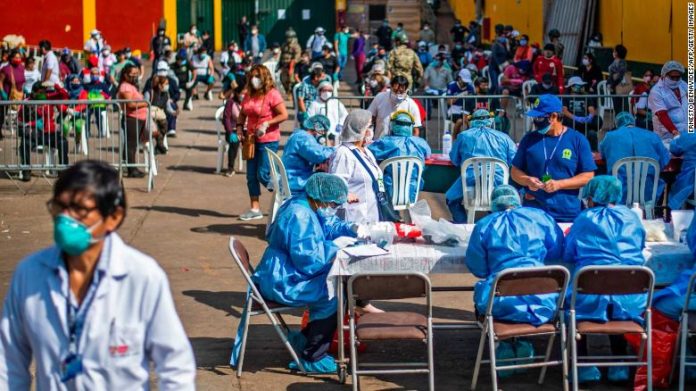For months, Latin America watched the rest of the world suffer as the coronavirus spread. It is a spectator no longer.
“This is the new epicenter,” said Dr. Marcos Espinal, director of communicable diseases at the Pan American Health Organization.
Months after emerging from a relatively obscure Chinese province, the eye of this viral storm has firmly landed in Latin America.
There are roughly 920,000 confirmed coronavirus cases and nearly 50,000 deaths across the region’s 33 countries, but those numbers are fast on the rise.
As new deaths and cases fall in the United States, Europe and Asia, Latin America now stands as the world’s sole region where the outbreak is unequivocally reaching new heights.
“In many ways this is no surprise,” said Dr. Ana Diez Roux, dean of Drexel University’s School of Public Health. “It was predictable that this was going to happen.”
In conversations with eight different experts, including a former head of state, epidemiologists and top researchers on the region, there is wide agreement that faulty government response coupled with Latin America’s unique economic and public health situation led to the severity of the current outbreak.
The experts were also nearly unanimous in the view that things are likely to get worse.
How we got here
Latin America recorded its first confirmed case in February, when a 61-year-old man tested positive in São Paulo, Brazil after returning from a trip to Italy.
For weeks afterward, things seemed to be under control. Case totals in the region crept only marginally higher. The first death wouldn’t be recorded until March 7 in Argentina.
But some already suspected there would be tragedy to come.
In a March 19 op-ed for the New York Times, Miguel Lago, a Brazilian public health expert, wrote that Latin America was not prepared for the virus and that the region might eventually become worse than Europe.
“[Latin America] could become the biggest victim of Covid-19 if health authorities and governments… do not take immediate actions.”
His words would prove prescient. By the middle of May, Latin America was reporting higher daily case total increases than both the United States and Europe.
Brazil would surge past Italy, the United Kingdom and Russia to record the second highest number of cases in the world.
A global shortage of tests and some countries’ reluctance to mass test have also raised doubts about whether cases and deaths are being accurately counted in the region.
“[The official numbers] provide a false sense of security. The number of cases is not showing close to the magnitude of the problem,” said Dr. Espinal. (CNN)




